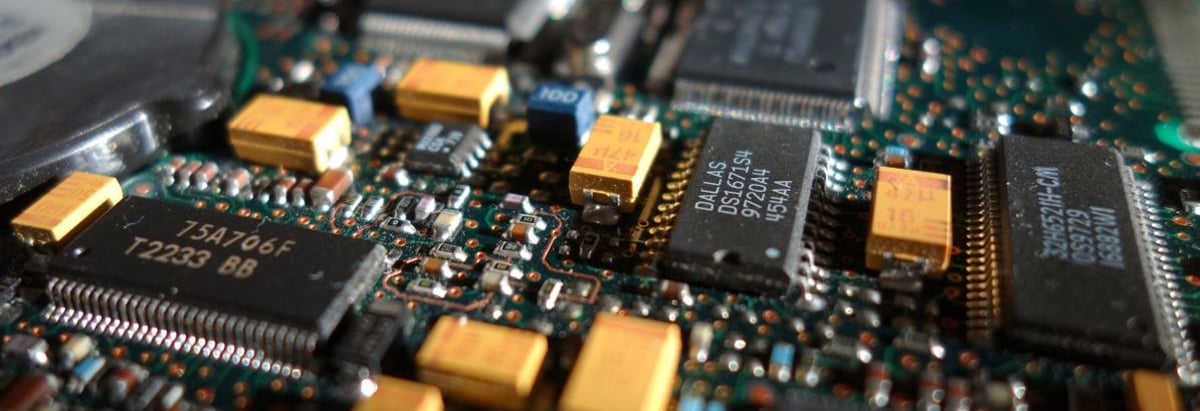- United States
- /
- Semiconductors
- /
- NasdaqGS:NXPI
NXP Semiconductors (NASDAQ:NXPI) Has A Pretty Healthy Balance Sheet

Warren Buffett famously said, 'Volatility is far from synonymous with risk.' It's only natural to consider a company's balance sheet when you examine how risky it is, since debt is often involved when a business collapses. As with many other companies NXP Semiconductors N.V. (NASDAQ:NXPI) makes use of debt. But is this debt a concern to shareholders?
Our free stock report includes 1 warning sign investors should be aware of before investing in NXP Semiconductors. Read for free now.When Is Debt Dangerous?
Generally speaking, debt only becomes a real problem when a company can't easily pay it off, either by raising capital or with its own cash flow. Ultimately, if the company can't fulfill its legal obligations to repay debt, shareholders could walk away with nothing. While that is not too common, we often do see indebted companies permanently diluting shareholders because lenders force them to raise capital at a distressed price. Of course, debt can be an important tool in businesses, particularly capital heavy businesses. When we think about a company's use of debt, we first look at cash and debt together.
What Is NXP Semiconductors's Debt?
The chart below, which you can click on for greater detail, shows that NXP Semiconductors had US$10.9b in debt in December 2024; about the same as the year before. However, because it has a cash reserve of US$3.29b, its net debt is less, at about US$7.56b.

How Healthy Is NXP Semiconductors' Balance Sheet?
According to the last reported balance sheet, NXP Semiconductors had liabilities of US$3.10b due within 12 months, and liabilities of US$11.8b due beyond 12 months. Offsetting these obligations, it had cash of US$3.29b as well as receivables valued at US$1.13b due within 12 months. So its liabilities total US$10.4b more than the combination of its cash and short-term receivables.
This deficit isn't so bad because NXP Semiconductors is worth a massive US$43.5b, and thus could probably raise enough capital to shore up its balance sheet, if the need arose. However, it is still worthwhile taking a close look at its ability to pay off debt.
See our latest analysis for NXP Semiconductors
We measure a company's debt load relative to its earnings power by looking at its net debt divided by its earnings before interest, tax, depreciation, and amortization (EBITDA) and by calculating how easily its earnings before interest and tax (EBIT) cover its interest expense (interest cover). This way, we consider both the absolute quantum of the debt, as well as the interest rates paid on it.
NXP Semiconductors's net debt to EBITDA ratio of about 1.7 suggests only moderate use of debt. And its commanding EBIT of 14.8 times its interest expense, implies the debt load is as light as a peacock feather. Sadly, NXP Semiconductors's EBIT actually dropped 5.9% in the last year. If earnings continue on that decline then managing that debt will be difficult like delivering hot soup on a unicycle. There's no doubt that we learn most about debt from the balance sheet. But ultimately the future profitability of the business will decide if NXP Semiconductors can strengthen its balance sheet over time. So if you're focused on the future you can check out this free report showing analyst profit forecasts.
Finally, a business needs free cash flow to pay off debt; accounting profits just don't cut it. So we clearly need to look at whether that EBIT is leading to corresponding free cash flow. During the last three years, NXP Semiconductors produced sturdy free cash flow equating to 64% of its EBIT, about what we'd expect. This cold hard cash means it can reduce its debt when it wants to.
Our View
When it comes to the balance sheet, the standout positive for NXP Semiconductors was the fact that it seems able to cover its interest expense with its EBIT confidently. However, our other observations weren't so heartening. For example, its EBIT growth rate makes us a little nervous about its debt. Considering this range of data points, we think NXP Semiconductors is in a good position to manage its debt levels. But a word of caution: we think debt levels are high enough to justify ongoing monitoring. The balance sheet is clearly the area to focus on when you are analysing debt. However, not all investment risk resides within the balance sheet - far from it. Case in point: We've spotted 1 warning sign for NXP Semiconductors you should be aware of.
At the end of the day, it's often better to focus on companies that are free from net debt. You can access our special list of such companies (all with a track record of profit growth). It's free.
Valuation is complex, but we're here to simplify it.
Discover if NXP Semiconductors might be undervalued or overvalued with our detailed analysis, featuring fair value estimates, potential risks, dividends, insider trades, and its financial condition.
Access Free AnalysisHave feedback on this article? Concerned about the content? Get in touch with us directly. Alternatively, email editorial-team (at) simplywallst.com.
This article by Simply Wall St is general in nature. We provide commentary based on historical data and analyst forecasts only using an unbiased methodology and our articles are not intended to be financial advice. It does not constitute a recommendation to buy or sell any stock, and does not take account of your objectives, or your financial situation. We aim to bring you long-term focused analysis driven by fundamental data. Note that our analysis may not factor in the latest price-sensitive company announcements or qualitative material. Simply Wall St has no position in any stocks mentioned.
About NasdaqGS:NXPI
NXP Semiconductors
Offers various semiconductor products in China, the United States, Germany, Japan, Singapore, South Korea, Mexico, the Netherlands, Taiwan, and internationally.
Very undervalued with mediocre balance sheet.
Similar Companies
Market Insights
Community Narratives


